
CLECKHEATON'S FINEST
Officers who fell
in the
Great War
by
Charlie Turpin
Top picture
The Spenborough Red Cross Ambulance, costing £600, was purchased by the people of Spenborough to help ferry the wounded from the front lines to base hospitals in France and Belgium. Mr J H Leather of Larkhill, Cleckheaton organised the appeal after spending some time doing a similar job in France in his private vehicle. Details of his son, Gerald, appear in the appendix at the end of the book.
Other members of the Leather family paid for and donated a wheeled stretcher to the local Territorials in the 1st/4th West Riding Regiment.
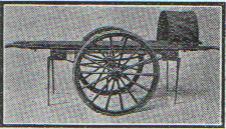
CLECKHEATON'S FINEST
OFFICERS WHO FELL IN THE GREAT WAR
When the War Memorial was unveiled in 1922 by Lt Col Alfred Law Mowat it contained four hundred and seventy names, twenty six of them officers. During the late 1920s four further names were added and in July 2000, following my research, thirty-five more names were added, including one officer, making a grand total of five hundred and nine. Thus 5.3% of the casualties were officers. According to local records fifty-five officers from Spenborough served in the War, 50% of whom lost their lives, a remarkably high proportion. From a population of about twenty thousand, almost three thousand served in the forces, five hundred and eight men and one woman of these dying, which is around 17%. Spenborough encompassed the towns and villages of Cleckheaton, Liversedge, Gomersal, Scholes, Flush, Millbridge, Hightown, Roberttown plus some other smaller communities.
In the majority of cases the officers came from Spenborough's prosperous families who were prominent in various walks of life and lived in grand houses. Familiar names such as the Andertons, Mowats, Walkers, Fentons and Atkinsons appear throughout the narrative, sometimes as casualties, other times as brother officers.
A familiar pattern emerges amongst these brave young men. Most of them joined the services as soon as possible after the outbreak of war in August 1914 as private soldiers but they were quickly commissioned, or gazetted, to officer rank. This was due largely to the class structure in place at the time, when those with a superior education and prosperous background were considered to be ideal leaders of the masses, regardless of their abilities. It must be said however that the Spen officers did seem to have a genuine ability to lead and look after their men and their patriotism and bravery cannot be doubted. Had they lived, the community would have been greatly enriched. They usually attended the same few schools, mixed in the same social circles and intermarried with other prosperous families in the area. A few of the officers were actually pre-war Territorials or reservists. When I refer to the local Territorial Battalion in the text, it refers to the 1st/4th Duke of Wellington's West Riding Regiment (the Dukes), and it consisted of companies of men mainly from Halifax, Elland, Brighouse and Spenborough. The local drill hall, a popular meeting place, was in Whitcliffe Road, Cleckheaton.
One can only imagine the thoughts of friends such as Charles Hyde and Sidney Newlands as they waited together in the Bradford Pals' trench to lead their men over the top at Serre on 1 July 1916. Both were the sons of ministers and both were killed instantly by the German machine guns. They, along with the others in this book, never had the chance to fulfil their promise, and their loss can never be measured.
This book is aimed both at the person with an interest in military matters and the local historian. I hope it will also provide a useful commentary on society at that time for the people of Spenborough.
I should like to thank the staff at Cleckheaton Library for their patience, the Spenborough Guardian Newspaper Group for permission to quote from their pages, the late Mr John Walker and the late Mr David Sharp for their assistance with filling in some details about their relatives. Eddie Morton, Colin Blakeley, Jim Hainsworth and the Commonwealth War Graves Commission have helped me with the photographs; and last but not least thanks to a local lady, Jill Midgley for her help with typing this document.
****
2nd LIEUTENANT WILLIAM LYON ANDERTON
1st/4th West Riding Regiment
Killed in action 21 August 1915
Age 30
No known grave
Listed on the Menin Gate,Ypres
Lived Spring Mount, Cleckheaton
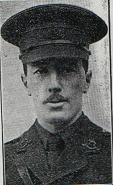
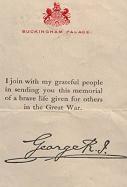
Willie was a pre-war Army Reservist who rejoined the colours six days after the outbreak of waras a Private in the local territorial battalion, the 1st/4th West Riding Regiment (the Dukes). While undergoing training on the Lincolnshire coast he was promoted to Corporal, and commissioned while at Doncaster in 1915. The battalion went abroad in April 1915 and manned the trenches north of Ypres.
He was in charge of the brigade bombers, and was shot by a sniper while visiting the sentries in the trenches in the early hours. The location was on the bank of the Yser Canal, two miles north of Ypres. Captain Denning subsequently wrote to Willie's parents, "I was quite close to him when he was killed at about 0430 hours Saturday, being shot through the head by a sniper. Lance Corporal O'Brien was wounded in the face by a splinter from the same bullet. He never regained consciousness, and I can assure you that he suffered no pain. I buried him in the canal bank in the afternoon, and we have put a cross over his grave, which adjoins the graves of other soldiers .................". The grave was subsequently lost through shellfire and thus he is commemorated on the Menin Gate, along with fifty five thousand other casualties from the Ypres area whose bodies were never found.
Due to Willie's popularity with the men there was no shortage of volunteers to retrieve the body and while helping in the recovery Private Leonard Stead received wounds in the leg which subsequently led to amputation. Reverend Anderton wrote a very moving letter to Pte Stead thanking him for his sacrifice while retrieving his son's body. Stead was subsequently awarded the Military Medal and discharged from the Army. He became the landlord of the Talbot Hotel in Cleckheaton.
Willie was a single man who lived with his brother, Arthur. Prior to the war he was a director in the family business at Anderton's Victoria Mills. Arthur died from an illness later in the war. The family was one of the most prominent in the Spen Valley, being instrumental in the introduction of the railway and the Co-op. His father, the Rev W E Anderton, lived in Tunbridge Wells, and Woodford Green in Essex. An uncle served with distinction as a Colonel in the Lancashire Fusiliers, and a cousin was killed on the Somme.
Born in Woodford Green, he attended St Aubyn's and Merchant Taylor's schools where he was prominent at football and cricket, and represented his county at lacrosse. He came north to join the family firm and was involved in many local sports.
His name also appears on the Providence Place Chapel and Cleckheaton Sports Club war memorials.
****
CAPTAIN JAMES COOKE BURROWS
1st/4th Kings OwnYorkshireLight Infantry
Killed in action 14 April 1918
Age 23
No known grave
Listed on the TyneCot Memorial to the Missing, Passchendaele
Lived Norcott, Liversedge

James enlisted in the local territorial battalion in August 1914 as a nineteen year old. He was commissioned into the Kings Own Yorkshire Light Infantry in early 1915 and went to the front with the 1st/4th Battalion in June of that year. In December 1915 he was gassed, but after that very little is known of his military career until his death.
He will certainly have had a very difficult war as his battalion was engaged in many actions in 1916, 1917 and early 1918. On the day of his death he was in action at Bailleul, Belgium when the Germans laid a heavy bombardment, including gas, on part of the town. A counter-attack during the afternoon drove the Germans back. During one of these actions he lost his life. His Colonel wrote a letter to his family stating what a wonderful officer he had been and how he would be missed by both officers and men. His body was never found and he is thus commemorated on the Tyne Cot Memorial along with thirty-five thousand other missing men.
Very little is known of his background other than that he was the youngest son of the family, who must have been very wealthy judging by the size of their house, which now serves as a nursing home. His grandfather was Mr J S Cooke JP of Ben Rhydding.
Prior to enlistment he was educated at Charney Hall, Grange over Sands and at Abbotsholme, Derbyshire.He is also commemorated on the Liversedge Church War Memorial.
****
LIEUTENANT JOSEPH ALFRED CHILD
9thYorkshire Regiment
Killed in action 7 June 1917
Age 23
Buried Bedford House Cemetery, Zillebeke, Belgium
Lived Upper Carr House, Liversedge

When war was declared in August 1914 Joseph Child was on his way to Belgium for a holiday so he had to return to Portsmouth. In September he enlisted in the 7th Battalion of the Yorkshire Regiment and later transferred to the 9th Battalion with which he went to France in June 1915.
He attained the rank of Company Quartermaster Sergeant and subsequently underwent a course of officer training in France. January 1917 saw him promoted to 2nd Lieutenant and shortly after that he became a Lieutenant. He was gazetted to the 69th Trench Mortar Battery attached to the 9th Battalion. He was killed when his battery was in action on the first day of the Battle of Messines Ridge. This was the first British action of the war to achieve any real success due mainly to extensive planning and mining prior to the attack. Joseph is one of over four thousand five hundred soldiers buried in Bedford House Cemetery.
He was educated in Oxford from the age of ten to sixteen, when he joined the staff of the Scottish Union National Insurance Company and was engaged at their Leeds office.
Two brothers, Harold and Clifford, served in the war and survived but his father, Ben died soon after the end of the hostilities.
Joseph spent a long time away from the area but it is recorded that he had many friends and was a very popular young man. He also is commemorated on the Liversedge Church War Memorial.
****
2nd LIEUTENANT DAVID HUSTON FENTON
1st/4th West Riding Regiment
Accidentally killed 8 September 1915
Age 20
Buried in Bedford House Cemetery, Zillebeke, Belgium
Lived Northcliffe, Cleckheaton

David Fenton joined the local territorial battalion on the outbreak of war, and went overseas in April 1915. He rose quickly through the ranks from Private toSergeant Instructor at the Brigade Bombing School. According to a colleague he was 'streets ahead of anyone else as a bomber'. He was gazetted Second Lieutenant on 2 September 1915 but was unaware of this when he died six days later. The official report states that he was practising bomb-throwing when a defective fuse exploded before its time and killed him. A friend and colleague, Lt Graham Mowat, when home on leave, said that the death was caused by the accidental explosion of a new type of bomb which was being experimented with. His brother, Capt W C Fenton, served in the same regiment and was awarded the Military Cross and Bar for gallantry. He survived the war and maintained his links with the local territorials. He was later knighted mainly for services to industry. He was Managing Director of the Scandinavia Mills, later known nationally as the British Belting and Asbestos Company (BBA), a large employer in the area, founded by his father earlier in the century.
Prior to the war David spent time in Europe learning languages to enable him to assist in the family business. He was an enthusiastic local sportsman and a member of the Cleckheaton Liberal Club. His name appears on the Cleckheaton Cricket and Bowling Club Memorial, the Central Methodist Church Memorial, the Providence Place Chapel Memorial and the Heckmondwike School Roll of Honour.
****
2nd LIEUTENANT RICHARD HARTLEY
8thEast Yorkshire Regiment
Accidentally killed 11 November 1916
Age 30
Buried Puchevillers British Cemetery, Somme, France
Lived George Street, Cleckheaton

Prior to the war Richard Hartley was a member of the Leeds University Officer Training Corps, a branch of the Territorial Force. Shortly after the outbreak of war he was commissioned into the West Yorkshire Regiment and subsequently transferred to the East Yorkshire Regiment. Prior to going abroad he was engaged as a Bombing Instructor at Rugeley Camp.
He went to France in the spring of 1916 and was very much involved in the battle of the Somme, during which his battalion had a very hard time. The circumstances of his death are somewhat mysterious. The only report from his regimental headquarters, in a telegram to his mother, stated: 'Deeply regret to inform you that your son died on 11 November gassed by ................ Bomb - Accidental. The Army Council expresses its regret.' From this communication it can only be assumed that they were experimenting with some sort of gas shell or bomb at the time of the accident, thus the secrecy. Puchevillers, where Richard is buried, was the scene of some large dressing stations just behind the lines where many casualties from the Battle of the Somme were treated.
He was formerly employed as a clerk in the Halifax offices of the Lancashire and Yorkshire Railway. An old scholar of Batley Grammar School he was well-known in local sporting circles as a cricketer, hockey and tennis player. His mother, a widow, had another son in the forces who survived the war.
The War Memorial in St John's Church, Cleckheaton, also bears his name.
****
2nd LIEUTENANT ALFRED EDISON HIRST
1st/4th West Riding Regiment
Killed in action 3 September 1916
Age 24
No known grave
Listed on the Thiepval Memorial to the Missing,Somme,France
Lived Vine Cottage, Cleckheaton

Eddie Hirst joined the local territorials, along with his brother, just before the outbreak of war. He went out to France with the battalion in April 1915 and shared all the hardships of the Ypres salient before moving to the Somme in 1916. The attack at 4.00 am on Sunday 3 September on the Schwaben Redoubt is part of local folklore as so many locals in the 1st/4th Battalion lost their lives. The Redoubt was a German fortress on a small hill, surrounded by strategically placed machine guns. Underneath was a series of tunnels containing sleeping accommodation, bakeries, a hospital and messes. He was killed while leading his platoon and a witness states that he saw him mortally wounded in a shell hole. His body was never retrieved for burial, and he is commemorated on the Thiepval Memorial to the Missing of the Somme, along with over seventy- three thousand others.
The family received many letters of sympathy from fellow officers who survived, including Major Walker and Captains Fenton and Mowat who all lost brothers in the conflict. His father, Eli Hirst, was the proprietor of the local newspaper, the Spenborough Guardian, and he had many letters published describing life in khaki.
He was educated at Batley and Bradford Grammar Schools and subsequently joined the business of A E Smith & Co at Pyenot Hall Wireworks, Cleckheaton, in a 'responsible position'. He was well-known and respected in the area and was prominent in local Scouting circles, being Master of the Moorbottom Troop in Cleckheaton.
His name also appears on the War Memorials at Whitechapel Church and St John's Church.
****
CAPTAIN CHARLES HIRST
1st/4th West Riding Regiment
Killed in action 3 September 1916
Age 22
No known grave
Listed on the Thiepval Memorial to the Missing,Somme,France
Lived Fieldhead, Cleckheaton

During 1912 Charles Hirst took a commission in the West Riding Regiment and was posted to the Cleckheaton Territorial Company. He was regarded as an officer of exceptional ability and promise and went abroad with the Battalion in April 1915. He was promoted to Captain in November 1915 at the age of 21. Prior to his promotion he acted as Battalion Transport Officer. He died leading his company in the attack on the Schwaben Redoubt, a German stronghold just north of Thiepval village. He was one of many local men killed in this action, which became known in Cleckheaton as Bloody Sunday. His body was never recovered and thus he is listed in the Thiepval Memorial to the Missing, along with over seventy-three thousand others whose bodies were never recovered or identified. Major James Walker, in a letter to the family, said Charles was loved by all his brother officers and he personally had lost a great friend.
Charles Hirst was a member of one of Cleckheaton's prominent families. His father owned Charles Hirst & Sons Exchange Wireworks in Cleckheaton and indeed was the employer of many local men who served, some of whom were also killed. Educated at Bradford Grammar School and then in Germany and France where he studied languages, he was destined for a commercial career in the family business. The family received many letters of consolation from fellow officers and it was the general opinion that Charles would have attained very senior rank had he not been killed.
He is also commemorated on the Cleckheaton Sports Club, Cleckheaton Conservative Club and Whitechapel Church War Memorials.
****
2nd LIEUTENANT PERCY HOLROYD
2nd/5th Kings OwnYorkshireLight Infantry
Killed in action 5 May 1917
Age 19
No known grave
Listed on the Arras Memorial to the Missing, France
Lived Snelsins Lane, Cleckheaton

When he joined the Army Service Corps in December 1914 Percy must have been aged only sixteen or seventeen. In March 1915 he went to Cadet School in Bristol, and was commissioned as a 2nd Lieutenant in the Kings Own Yorkshire Light Infantry in March 1917, sailing for France on 16 April. He had been with this new battalion twelve days when he was killed during the Battle of Arras. At the time of his death he was in the Bullecourt area. His Captain wrote that he was killed on outpost duty in front of the Hindenberg Line and told the family that he got to know Percy quite well during the night of 3 May which was spent in a shell-hole, along with some wounded, sheltering from the German guns. He added that he would miss his cheery smile and boyish face. In his only letter home Percy told his parents: "I was proud to take those Yorkshire lads over the top and they stuck to me through it all to the end."
Prior to enlistment Percy was a clerk at the nearby Hunsworth Dyeing Company, and was a teacher at Whitechapel Church Sunday School. He was a former pupil of Whitcliffe School, Cleckheaton. He also is commemorated on the Whitechapel Church Memorial and his old school War Memorial.
****
2nd LIEUTENANT CHARLES STEWART HYDE
16TH West Yorkshire Regiment (1stBradford Pals)
Killed in action 1 July 1916
Age 25
No known grave
Listed on the Thiepval Memorial to the Missing, Somme, France
Lived Whitechapel Church Vicarage, Cleckheaton
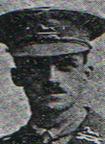
Soon after the outbreak of war Charles Hyde joined the Leeds Pals with his brother Eustace, as a private soldier. He was commissioned into the Bradford Pals Battalion and went with them to Egypt in late 1915, before arriving on the Somme in the spring of 1916. The 1st July 1916 was the blackest day in British Military History when twenty thousand men were killed and another thirty-seven thousand wounded, mostly within minutes of leaving their trenches. The Bradford and Leeds Pals were almost completely annihilated in front of the fortified village of Serre at the north of the Somme battlefield. A letter to the family from a colleague states that he was leading his platoon over the top and he was wounded in the arm and leg before he had gone a hundred yards. He would not go back and stated that "he would see the job through." Eventually his leg was bound and he was dragged to a shell-hole; but while sitting there with two other wounded soldiers, encouraging his men, a shell exploded, killing them all instantly. What was left of his body was never found, and thus he is commemorated on the Thiepval Memorial to the Missing.
Prior to joining the staff of the Union of London and Smiths Bank he had been a pupil at Bradford Grammar School. He was employed at branches in Cleckheaton, Dewsbury and Leeds. He, like his brother, was involved with Whitechapel Church where their father was the vicar.
He is commemorated on the Bradford Grammar School Roll of Honour and also on the memorials at St John's and Whitechapel Churches.
A stained-glass window in memory of both bothers was inserted in Whitechapel Church at the end of the war being paid for by subscriptions from the parishioners.
****
LIEUTENANT EUSTACE EMILE HYDE
4th Royal Irish Fusiliers
Killed in action 12 October 1916
Age 23
Buried AIF Burial Ground, Flers, Somme, France
Lived Whitechapel Church Vicarage, Cleckheaton
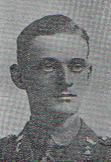
Eustace Hyde joined the Leeds Pals Battalion of the West Yorkshire Regiment as a Private soon after the outbreak of the war. After gaining his commission in the Royal Irish Fusiliers he became Musketry Instructor to the Battalion, and went to the front three months prior to his death. He was shot dead by German machine gun fire on the enemy parapet while gallantly leading his platoon into action at Lesboeufs. The fire was so intense that his comrades could not recover his body.
A former pupil of Bradford Grammar School he held a responsible position with the Bradford Dyers Association, based at the nearby Hunsworth Dyeworks. He was connected with Whitechapel Church where his father, the Reverend T S Hyde, was Vicar. It must have been a terrible blow to the family to lose two of their three sons during the Battle of the Somme, but Rev Hyde carried on bravely and was involved in many, what must have been very painful, services of remembrance both during and after the war.
His body now lies in the beautiful Australian cemetery at Flers, about one mile from where he fell, so it must have been eventually recovered.
He is also commemorated on the memorials at both Whitechapel and St John's Churches, and Bradford Grammar School.
Charles Hyde, Eustace's brother, had no known grave as his body was never found. It is gratifying to see that their parents added an inscription to Eustace's gravestone commemorating Charles: "Also in loving memory of 2nd Lieutenant Charles Stewart Hyde, 16th West Yorkshire Regiment, fell in action near Serre on 1 July 1916, age 25."
****
2nd LIEUTENANT EDWARD IRISH
1st/5thWest YorkshireRegiment
Killed in action 20 June 1915
Age 23
Buried in Le Trou Aid Post,Fleurbaix,France
Lived Churchfield Terrace, Liversedge

Edward was a student at Leeds University studying science before the war. He was a member of the University Officer Training Corps and had reached the rank of Sergeant. On the outbreak of war he applied for, and was granted, a commission in the West Yorkshire Regiment. He trained at Strensall and Sutton-on-Sea, specialising in signalling, and was posted to France in April 1915. His battalion was in action in the Fleurbaix sector. He was killed instantly by a sniper's bullet while superintending the repair of the barbed wire in front of his post. He was buried in a small cemetery five hundred yards behind the front line. This cemetery was begun in October 1914 and remained open throughout the war, although it only contains three hundred and fifty graves. It is situated a mile from where his friend Luke Mallinson Tetlow is buried.
The son of the headmaster of Millbridge School, Edward was a brilliant scholar himself. He was awarded scholarships which took him to Bradford Grammar School and Leeds University where he had obtained a degree in Chemistry and an Honours Degree in Applied Sciences. He was undecided whether to accept one of the posts offered to him in the leather industry or carry on at University with research when the war broke out. His two brothers Frank and Harry, both officers, survived the war although the latter was seriously wounded and permanently blinded. Their father Thomas was involved in many local fund-raising committees during the war, and after the war was a prominent member of the War Memorial Committee and Pension Tribunals.
Edward is listed on the Liversedge Church War Memorial and also in the Batley Grammar School Roll of Honour.
****
2nd LIEUTENANT TOM JOWETT
Royal Flying Corps
Accidentally killed 29 May 1918
Age 20
Buried Cleckheaton New Cemetery, Cleckheaton
Lived Holme Lea, Cleckheaton

Tom enlisted in the Army (Army Service Corps) aged eighteen, and later transferred to the Royal Flying Corps. He was in his sixth month of training as a pilot when, at a Yorkshire aerodrome, the plane's rudder jammed and it crashed to the ground. Both Tom and his instructor were critically injured and died shortly afterwards. The inquest on both recorded death due to shock.
The body was brought by train to Cleckheaton Railway Station and a service was conducted at the family home by Reverend Hyde. The body was then put onto a carriage and covered by a Union Jack, on which were placed the young officer's belt and cap. It was pulled by Scouts and followed by a large procession on the mile journey to the cemetery where the burial took place in the family plot. A Commonwealth War Graves headstone was later erected at the head of the grave. Lizzie Jowett, Tom's sister, died two weeks after the armistice aged twenty-five. She had been a nurse in various war hospitals since 1915 and died in the influenza epidemic which swept through Europe at the end of the war. She is the only woman listed on the Spenborough War Memorial, and shares the family grave in Cleckheaton New Cemetery. The Jowetts, another prosperous local family, owned a leather works in St John's Place, Cleckheaton. Tom had been learning the leather trade at a tannery in Keighley prior to his enlistment. Sisters Lizzie and Annie attended the funeral but elder brother Sam was unable to be released from his duties with the Royal Engineers in France.
Tom is also commemorated on the Whitechapel and St John's Churches War Memorials.
****
2nd LIEUTENANT MILTON KERSHAW
1st Gloucestershire Regiment
Killed in action 7 November 1914
No known grave
Listed on the Menin Gate Memorial to the Missing, Ypres, Belgium
Parents lived Moorland Mount, Cleckheaton
Before the war Milton was a member of the Cambridge University Officer Training Corps and was subsequently gazetted into the 1st Gloucester Regiment as a Special Reserve Officer. When war was declared, as a reservist he immediately joined his battalion, which was part of the Regular Army. As part of the original British Expeditionary Force he went abroad within weeks and was involved in the Battle of Mons and the subsequent retreat, and then the Battle of the Aisne.
A witness said that he fell near Dixmude but, in a letter to the parents, his Colonel said that this information could not be relied on, as the Private was himself wounded. He added that there was a strong possibility of him being a prisoner. However, his body was never found and he is listed on the Menin Gate, along with fifty-five thousand others who were missing between the start of the war and 15 August 1917.

Thirty-five thousand others missing in the Ypres Salient are listed on the nearby Tyne Cot Memorial.
Very little is known about Milton, but he had not been a resident of Cleckheaton for some years before the war. Parental influence must have led to his inclusion in the War Memorial and no photograph of him exists.
He was a former pupil of Bradford Grammar School and then went on to Cambridge University where he obtained his degree in Natural Sciences. After university he gained a position as lecturer in Agricultural Chemistry at Cirencester University, and was also the Meteorological Office's representative for the county.
He is also commemorated on the Bradford Grammar School and the Cleckheaton Conservative Club Rolls of Honour.
****
CAPTAIN (RETIRED) AMBROSE ARTHUR LOFT
63rd Brigade Royal Field Artillery
Buried St John'sChurchyard, Cleckheaton
Died at home 15 June 1916
Lived Glencoe, South Parade, Cleckheaton

Ambrose Loft, an Englishman who was described in the New York Herald in April 1914 as someone who 'had lived more adventures than many authors had written about', died in his late forties.
This intriguing story begins in Manchester, where he was born. Some of his boyhood was spent in Halifax and as a young man he served in the Zulu Wars and the Boer War, after which he became a globe-trotting war correspondent. In 1911 he offered his services to the Greeks in the Balkan Wars and became a much-decorated Colonel, and also the godfather to King Constantine's daughter Princess Elizabeth.
On the outbreak of World War I, by which time he was in his mid to late forties, he joined the Canadian forces in Canada as a private soldier. On arrival in England he was commissioned as an officer in the Royal Field Artillery and became Adjutant to the 63rd Brigade.
In March 1915 he was badly injured by some stampeding horses during an inspection of the Brigade by the King. He was invalided out of the Army in June and returned to his home in Manchester in July. He subsequently came to live with his in-laws in March 1916 at South Parade, Cleckheaton and died there three months later. His father-in-law, Mr Russell, was a retired teacher who had only lived in the area for two years.
As he was a Spenborough resident at the time of his death he is entitled to his place on the War Memorial but no other real connection with the area can be found. He also appears on the St John's Church War Memorial.
****
TEMPORARY CAPTAIN ARTHUR LONGBOTTOM MANN
Royal Engineers
Killed in action 30 March 1918
Age 29
No known grave
Listed on the Pozières Memorial to the Missing,Somme
Parents lived at The Woodlands, Norristhorpe, Liversedge

Arthur joined the 16th Battalion West Yorkshire Regiment (the Bradford Pals) on the outbreak of war. He was commissioned in April 1915 and transferred to the Royal Engineers in January 1916 as a mining engineer with 328 Company. Wounded in April 1916, he returned to the front in August and was in action up to the date of his death. He died at Demuin near Amiens during the famous 'backs to the wall' action when the Germans launched the Spring Offensive as a last attempt to win the war. The Prime Minister described the action to defend Amiens in the House of Commons, stating that a 'scratch' army consisting of engineers, cooks, orderlies and anyone capable of bearing arms was thrown together to avert what could have been an overwhelming catastrophe. A fellow officer wrote to his parents expressing sympathy at the death of the 'most popular man in the company', and describing the exact location of the body. Unfortunately the body was subsequently lost and Arthur is commemorated on the Pozières Memorial along with thirteen thousand other souls lost in action.
Arthur had been a student at Silcoates School and went on to Leeds University where he studied mining engineering. At the outbreak of the war he was articled to a mining engineer in Staffordshire. Once again, as with his brother, there is doubt whether, as a non-resident of Spenborough, he should appear on the War Memorial. The Silcoates and Heckmondwike Schools Rolls of Honour and the Norristhorpe Church War Memorial also bear his name.
****
2nd LIEUTENANT LAWRENCE JOHN MANN
16TH Battalion Northumberland Fusiliers
Killed in action 12 July 1917
Age 21
No known grave
Listed on the Nieuport Memorial to the Missing, Nieuport, Northern France
Parents lived at The Woodlands, Norristhope, Liversedge

On the outbreak of war Lawrence was a student undergoing a three-year course at an agricultural college in Shropshire. In October 1915 he joined the Leeds University Officer Training Corps and later transferred to the Inns of Court Officer Training Corps in London. He was gazetted into the Northumberland Fusiliers in January 1917 and went to France with them a month later. The 16th Battalion, also known as the Newcastle Commercials as it originally consisted mainly of clerks, was almost wiped out on the Somme in July 1916. Lawrence would have been one of the replacement officers when the battalion was being built up to strength again. Throughout the summer and autumn of 1917 the battalion was involved in operations around the Flanders coast including the defence of Nieuport from 10 to 12 July, when Lawrence was killed.
The Nieuport Memorial is two miles inland from the coast and commemorates five hundred and sixty six missing who fell in 1914 and in particular in July 1917 in the defence of Nieuport. As Lawrence's body was never found his name appears on this rather bleak memorial.
Lawrence's elder brother was killed in action in 1918 but another brother, Bernard, served in the Royal Artillery and survived the war. As Lawrence was not a Spenborough resident it is a matter for debate whether he should have been named on the War Memorial.
He is also listed on the Bradford Grammar School Roll of Honour and on the Norristhorpe Church War Memorial.
****
CAPTAIN JOHN CLIFFORD METCALFE MC
Royal Army Medical Corps
1st West Riding Field Ambulance
Died from the effects of gas 20 March 1918
Buried Lijssenthoek Military Cemetery, Belgium
Lived Eastfield, Carlton Road, Liversedge
On the outbreak of war John Metcalfe was House Surgeon at Leeds General Infirmary, as well as being in medical practice in the area where he lived. He enlisted immediately and obtained a commission in the RAMC. Somehow he got himself attached to the 49th Division which was made up of West Riding units including the1st/4th Dukes, the local Cleckheaton Territorial Battalion. He went to the front with them in April 1915 and stayed with them until his death from gas poisoning three years later. He was awarded the Military Cross by the King in May 1917 for long and valuable service. Otherwise little is known of his military career but the Division to which he was attached had a very difficult war and took part in all the main battles. Many thousands of casualties will have passed through his Field Ambulance during his years at the front. Field Ambulance is a misleading term, as it really means a front line (often improvised) hospital. These places were the scenes of unbelievable suffering as they were the first places the wounded and dying were brought for treatment.
The military cemetery where he is buried contains almost ten thousand graves.
John was a former pupil of Batley Grammar School and in 1907 he entered the University of Leeds, graduating with first class honours in 1912. He then spent the next two years as House Surgeon at Leeds Infirmary and was also in practice in the Liversedge area. During his student days he was said to be a 'more than capable footballer, sprinter and lawn tennis player'.
The Memorials at Batley Grammar School, Liversedge Church, St Saviours (Norristhorpe and Heckmondwike) and Leeds Infirmary also bear his name.
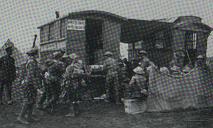
PHOTOGRAPH OF GRAHAM MOWAT; HIS GRAVE ALONGSIDE HIS MEN AND A POEM WHICH APPEARED IN THE LOCAL NEWSPAPER.
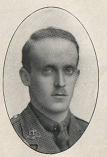
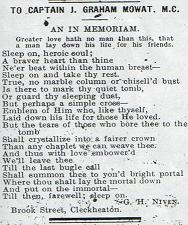
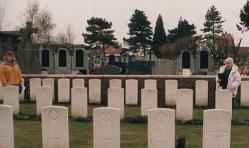
****
CAPTAIN JOHN GRAHAM MOWAT MC
1st/4th West Riding Regiment
Killed in action 27 June 1917
Age 23
Buried Sailly La Bourse Communal Cemetery Extension, Béthune, France
Lived Kenmore, Cleckheaton
On the outbreak of war Graham had just completed an agricultural course at Cirencester with a view to a career in farming. Previously he had attended Bradfield School where he was a member of the Officer Training Corps. This experience led him to join the local Cleckheaton Territorial Battalion where he immediately began training for a commission.
He went out to France in April 1915 with the rest of the battalion. His brother, Alfred Law Mowat, was a Captain in the same battalion. Graham was promoted 2nd Lieutenant in August 1915 and, upon the death of Captain Hirst in September 1916, took over his rank and duties. Since his arrival abroad Graham had been in the thick of the fighting and managed to survive Ypres and the Somme.
While on leave a few weeks before his death he was presented with the Military Cross by the King at Buckingham Palace. This award was for 'conspicuous gallantry and devotion to duty' for several raids on enemy trenches, on one occasion he personally helped to clear a gap in the enemy wire. A few days after this event his rank of permanent Captain was confirmed.
He was killed outright along with five of his men in a front line dugout near Hulloch. It is reported that he left the relative safety of the Brigade dugout at 3.00 am to be with his men and to try to ensure their safety, when a trench mortar struck, killing them all instantly. They are all buried together in a small cemetery (in one row in the Sailly La Bourse Cemetery) containing two hundred and seventeen graves. His brother Alfred attended the burials.
Many letters of condolence were received from men and brother officers, including Major Walker and Captain Fenton. They all shared a common theme saying that Graham was a wonderful leader with all the social graces and his men would follow him anywhere.
An interesting story relates to events a few days before Graham's death. He had paid for a celebration in a hotel behind the lines for members of his 'B' Company who had recently been awarded decorations for gallantry in a trench raid. Apparently it was a magnificent party enjoyed by all. Sadly six of those at the function were killed together in that front line dugout a few days later.
The Mowats were a very prominent family in the area, and during the war Mr and Mrs Mowat were involved in many local organisations and committees. Mrs Mowat was the daughter of Alfred Law, the principal director of Samuel Law & Co of Cleckheaton, the largest manufacturer in the world of card clothing. Their generosity was well-known and they also spent much time visiting bereaved families. After the war they donated a property which became the ex-Servicemen's Club, paid for the public library which still flourishes today and their own home eventually became part of the Leonard Cheshire organisation which originally provided homes for disabled ex-servicemen.
Alfred Law Mowat rose from Captain to Lieutenant Colonel, earning the DSO, MC and Bar, and a mention in dispatches for gallantry. He died in 1968 after a prominent local career. Graham is also commemorated on the Central Methodist Chapel War Memorial.
****
2nd LIEUTENANT SYDNEY BARON NEWLANDS
16TH West Yorkshire Regiment (1stBradford Pals)
Killed in action 1 July 1916
Age 20
Buried Serre Road Number 2 Cemetery, Somme, France
Lived The Hollies, Cleckheaton

Sydney, along with the Hyde brothers, joined the Leeds Pals on the outbreak of war. He was a student and entered the army as a Private direct from Silcoates School in Wakefield. In May 1915 he was commissioned into the Bradford Pals (16th West Yorkshires) but, due to his age, he was retained in England to assist with bombing instruction. A year later he went to the front and within two months he had been killed in the disastrous attack on Serre, along with his friend Charles Hyde who was in the same Battalion. That morning the Bradford Pals suffered five hundred and fifteen casualties out of a strength of seven hundred and seventy four. Unlike Charles Hyde his body was eventually found and is buried along with over seven thousand others in the Serre Road Number 2 Cemetery, about half a mile from where he fell. The cemetery was first started in Spring 1917 when the killing fields in front of Serre began to be cleared of bodies.
A further similarity to the Hyde family is that Sydney was also the son of a minister. The Rev Newlands of Providence Place Chapel, Cleckheaton was also an Army chaplain, and did much valuable work for the men in hospital and in the front lines in France.
Born in America, Sydney returned to England as a child. While a student at Silcoates School he spent some time seconded to the Leeds Educational Department. The school was for the sons of Congregational Ministers and missionaries and Sydney was there as a boarder from 1912 to 1914. According to the school Roll of Honour he excelled at cricket, football and gymnastics. He became a prominent member of the Bradford Pals football team. After his death the Reverend Newlands funded an annual school gymnastics scholarship. The school suffered heavy losses on 1 July 1916 when three old boys were killed and nine wounded.
As well as on the Silcoates School Roll, he also appears on the Leeds Education Department, Providence Place Chapel and St John's Church Memorials.
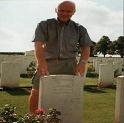
****
2nd LIEUTENANT GEORGE FAIRBURN SENIOR
1st/7th West Yorkshire Regiment (LeedsRifles)
Died of wounds 17 November 1917
Age 25
Buried Buttes New British Cemetery, PolygonWood, Belgium
Mother lived Moor Lane, Gomersal

George Senior did not enlist until 1916 and was probably a conscript. He rose to the rank of Sergeant very rapidly and was commissioned four months prior to his death, a rare example of a man rising through the ranks to become an officer on merit rather than on family connections. The Battle of Passchendaele was still raging when George met his death after being with his new Battalion only a few weeks. They were in the Broodseinde Sector, in support on the Anzac Ridge, when he was wounded, succumbing to his wounds three days later.
Buttes New British Cemetery, where he is buried, is one of the most picturesque in Flanders, and is only a few miles from where he died.
Not a great deal is known of George's background. He was involved with St Mary's Church, Gomersal and after leaving Heckmondwike School went to Teacher Training College. At the time of his enlistment he was an assistant teacher at Bolton-on-Dearne Council School, South Yorkshire, but it is not known whether he lived at home or nearer to his place of work.
He is also commemorated on the Gomersal Church War Memorial and the Heckmondwike School Roll of Honour.
****
2nd LIEUTENANT CHARLES ARTHUR SMITH DCM
1stLeicester Regiment
Killed in action 18 September 1918
Age 27
Buried Chapelle British Cemetery, Holnon, near St Quentin, France
Parents' address St Peter'sMission, Hunslet Moor,Leeds

Charles Smith was one of the few officers from the area who achieved his rank through merit alone, rather than from the position of his family in society. He enlisted in the Northumberland Fusiliers on the outbreak of war and rose to the rank of Sergeant Major. In June 1917 he was awarded the Distinguished Conduct Medal, second only to the Victoria Cross, for conspicuous gallantry in the fighting for Messines Ridge in Belgium. Following this action he was commissioned into the Leicester Regiment. After enduring four years of war, being wounded three times, and participating in all the major battles his luck finally ran out just two months before the Armistice. In the final push he was killed in the Battle of the Aisne in the St Quentin area. His Lieutenant Colonel wrote that he was an excellent officer; and his body, when recovered for burial, showed all the signs of instant death. La Chapelle Cemetery contains six hundred and seventeen graves and was created after the Armistice when bodies were brought in from some of the small isolated cemeteries in the area.
At the outbreak of war the family lived in Prospect Road, Cleckheaton. Charles and his three brothers all joined the Army: Albert in the West Riding Regiment, E H Smith was with the Canadian Engineers and W E Smith with the Border Regiment. Albert, a Private in the local territorial battalion, was killed along with many other Spen men on 3 September 1916 in the disastrous attack on the Schwaben Redoubt during the Battle of the Somme. The parents were deeply religious members of the Temperance Movement and in 1916 left the area to work in the Church Army in the YMCA huts at Sheerness Camp. Mrs Smith was the only woman in the camp and when her health broke down they returned to Yorkshire to take charge of a church mission in Leeds.
Technically Charles Smith should not have appeared on the War Memorial as at the time of his death he was not a Spenborough resident and nor were his family residents. However, there are many others with a lesser claim than Charles who are commemorated.
The Cleckheaton Conservative Club Roll of Honour and St John's Church also bear Charles Smith's name.
****
2nd LIEUTENANT SYDNEY PEARCE STANSFIELD
1st/4th West Riding Regiment
Killed in action 30 April 1917
Age 20
Buried Le Touret Military Cemetery,Richbourge,France
Lived Hamilton House, Cleckheaton

Sydney joined the local Territorial Battalion on the outbreak of war aged 18 and went out to France and Belgium with them in April 1915. He was commissioned 2nd Lieutenant in early 1916 and received a Certificate for Bravery later that year for leading a raid into the German trenches where he was badly wounded in the foot. On recovery he was posted to the 5th Battalion but, after some leave, he returned to France to rejoin his old chums in the 4th on 19 March 1917.
On 3 May 1917 the family received a letter informing them of Sydney's death. The letter, from Captain Fenton of Cleckheaton, explained that he was in the front line when a shell splinter pierced his metal helmet killing him instantly. By the same post a letter was received from Sydney dated 30 April saying that he was in the trenches and 'life was not at all bad'. He was regarded by Officers and men alike as the finest young officer in the battalion and was loved by all. He was killed near Shetland Post in the Ferme du Bois Sector overlooked by the Germans on Aubers Ridge. The Le Touret Cemetery is several miles from where he died so his body will have been brought there after the war, when many small cemeteries were concentrated into larger ones. It contains one thousand graves and on the walls there are the names of almost fourteen thousand men missing from conflicts in that area who have no known grave.
The family were the joint proprietors of the Valley Printing Company, Cleckheaton but little is known of Sydney before the war other than he stated his occupation as Fashion Printer on enlistment. As he was only just 18 on the outbreak of war it is reasonable to assume that he was learning the family business.
He is also commemorated on the memorials at Whitcliffe Mount School, St John's Church and Providence Place Chapel.
****
2nd LIEUTENANT GEORGE NORMAN TAPP
14THCheshire Regiment
Died of wounds 28 March 1916
Age 28
Buried St Pierre Cemetery, Amiens, France
Lived Springfield, Hightown, Liversedge

The events surrounding the death of Norman Tapp are particularly tragic. He volunteered on the outbreak of war and was posted to the Army Service Corps. Wanting to get into the action he transferred to the Leeds Pals (15th West Yorkshire Regiment) and began training at Colsterdale Camp near Ripon. While bathing in the river he sustained a severe cut to his foot when he stepped on broken glass. Blood poisoning set in and he was seriously ill in Beckets Park Hospital and not expected to live. Fortunately he recovered and was commissioned into the Cheshire Regiment. He arrived in France on 20 March and had only been in the front line for a day and a half when a shell exploded in the trench, badly wounding Norman's companion. He did not think his own injuries were serious but on being rescued he found that a fragment of the shell had cut through the sole of his boot and injured his foot. He was admitted to hospital and his parents received a letter telling them not to worry as the injury to his foot was not serious. Knowing his previous problems they feared the worst and the next day a telegram arrived stating that he had died of his wounds. A few days later his mother, who was unwell at the time, died of 'a broken heart'.
Norman was the only son of Mr Henry D Tapp, a partner in a large printing and stationery firm with branches in London, Leeds and Bradford. After completing his education at Bradford Grammar School, Norman joined the firm of Tapp & Toothill. He was well known and respected in the Spen Valley as he was one of the first disciples of Baden Powell's Scout Movement and had set up a troop from his own home, Springfield Hall. Many boys were given a better start in life through his guidance in their early years. Following the double tragedy Mr Henry Tapp moved to live in Leeds and put the family home up for sale. The War Memorial at Bradford Grammar School also bears Norman's name.
****
LIEUTENANT LUKE MALLINSON TETLOW
1st/7th West Riding Regiment
Killed in action 30 May 1915
Age 21
Buried Rue David Military Cemetery, Fleurbaix, France
Lived The Royds, Cleckheaton

Lt Tetlow, known as Mallinson, joined the Territorial Army at Huddersfield in April 1914. When war was declared he was the second officer in the battalion to volunteer for service overseas. The Battalion arrived in France in April 1915 and were in the line in the Fleurbaix area of Northern France. He had only been in France for six weeks when he was killed. He was in the trenches, letting off flares in the direction of the German lines, when he was shot in the head and killed instantly. He was buried in a grave just behind the firing line, following a service in the nearby orchard. The men who served under him made a wreath from lilac blossoms plucked from a nearby bush.
Mallinson was a member of the Tetlow/Sharp family who, as Critchley, Sharp and Tetlow were the proprietors of Prospect Mills in Cleckheaton. Following an outstanding academic career he had spent several years in the family firm learning the business. At twenty years of age he had become so adept in all aspects of the trade that he was regarded as his father's right hand man. His younger brother, who later became Captain John Leslie Tetlow in the same Battalion, survived the war. He was in the same area as Mallinson when he was killed but could not attend the burial as he was in hospital suffering from German measles at the time. The eighteen year old wrote a very moving letter to his parents, in which he advised them to 'bear up and try to help one another'.
Whitechapel Church in Cleckheaton houses several memorials to Mallinson: firstly, he appears on the War Memorial on the church entrance; his original grave marker cross has been preserved and mounted on an internal wall; there is a window dedicated to him; and he is also commemorated on the family grave in the churchyard. The grave marker was probably brought to England from France in the 1920s, when the crosses were replaced by the white headstones which are so familiar today. His father tried to have his body repatriated but the war Office stuck rigidly to it's policy and flatly refused several requests.
****
2ND LIEUTENANT THOMAS CHRISTOPHER VAUSE
1st/8th West Yorkshire Regiment (Leeds Rifles)
Killed in action 3 September 1916
Age 33
Buried Mill Road Cemetery,Somme,France
Lived Netherfield, Cleckheaton

Thomas Vause joined the Inns of Court Officer Training Corps in the summer of 1915. He was gazetted into the Leeds Rifles a few months later and joined his battalion in France. On 3 September 1916 the Battalion was involved in a large scale attack just north of Thiepval village. The objective was a machine gun post known as the Pope's Nose. However, on leaving Thiepval Wood, many casualties were sustained from the German machine guns situated in the Pope's Nose and also on the Schwaben Redoubt overlooking the objective. He was reported missing but it was not until August 1917 that the family received the telegram stating that he was 'now presumed dead'. Many of the casualties from that attack were not found until Spring 1917 following the German retreat to the Hindenberg Line. Unfortunately, after lying in No-Man's-Land for nine months, many bodies could not be identified but Thomas' was and he is buried in the Mill Road Cemetery, near to where he fell.
He was a native of Leeds and after leaving Leeds Boys' Modern School he went to Cambridge University in 1904, and obtained a Master's Degree in 1911. He subsequently gained a Law Degree and embarked upon a teaching career. He was appointed Second Master at Whitcliffe Mount Secondary School in Cleckheaton in 1914. A fine all-round sportsman as well as a brilliant academic, he was well-liked by both staff and pupils.
He was the only son of Councillor and Mrs Vause of Moor Allerton, Leeds. Soon after he was reported missing, his wife and two small children returned to live with her family in Leeds.
****
LIEUTENANT CYRIL GORDON WALKER MC MID
Royal Naval Division (Anson Battalion)
Killed in action 27 March 1918
Age 32
Buried Mesnil Communal Cemetery Extension, Somme, France
Lived Pyenot Hall, Cleckheaton

Cyril was born in Mirfield in 1885 the son of John E Walker a very wealthy Blanket Manufacturer. He was educated at Mill Hill Public School and subsequently became employed in local manufacturing industries in an around the Spen Valley. He resided at the Limes, Whitcliffe, Cleckheaton.
At the outbreak of war in 1914 he was a Director at W Atkinson and Son, a large firm of worsted spinners in Cleckheaton. Cyril Walker joined the forces in 1915 as an Ordinary Seaman in the Royal Navy. He was commissioned into the Royal Naval Division in September 1915 and had been in France for two years prior to his death.
While leading his platoon in the Beaumont Hamel area, north of the River Ancre, his gallantry earned him the Military Cross but he was later killed in the same action. A letter sent to his widow by his second-in-command expressed the feelings of the company: 'As the new commander of the company which was so ably commanded by your late husband, I wish on behalf of the officers and men to express with deep regret the loss which is both ours and yours. In him we lose not only a company commander of exceptional merit, but also to many of us a personal friend, one beloved by all his officers and men. Please accept the deep sympathy of us all........' His body now lies a short distance from where he fell.
The Royal Naval Division had resulted from an excess of sailors, who were subsequently converted into land troops. The Germans launched their1918 Spring Offensive on 21 March, and made remarkable gains in a very short time. The Anson Battalion was pushed back almost twenty miles from the Flesquires Salient to the Beaumont Hamel area of the Somme. All the gains made by the British over the past twenty-one months were lost in a matter of days in what was the Germans' last effort to win the war.
Prior to the war Cyril was prominent in local Liberal circles and was regarded as a brilliant business man. His commanding officer, Lt Col A W Buckle, wrote a glowing obituary for the Mill Hill School Roll of Honour. He left a widow and three children.
This is a fitting point to mention the contribution by Cyril's family to the war effort. His father John Walker JP was a successful blanket manufacturer from Mirfield. Three other sons served in the war with great distinction and a daughter was a nurse in various military hospitals. Lt Col James Walker commanded the 1st/5th Battalion West Riding Regiment and became Spenborough's most decorated soldier, gaining the DSO and Bar, French Légion d'Honneur, Belgian Croix de Guerre and seven Mentions in Despatches; Captain Eric Walker DFC served in the Royal Air Force; and Lt Reginald Walker MC in the Royal Field Artillery.
The family of Cyril's wife Dorothea, whom he married in 1911, also suffered greatly. They were the Goldthorps, who owned a mill at Butt End, Cleckheaton. She lost brothers on the Somme and at Passchendaele, with another brother dying in 1923 from his wounds. Two of her sisters were nurses during the conflict. Another of Cyril's brothers-in-law was Lt Col Harry Atkinson, who was invalided out of the 1st/4th West Riding Regiment in April 1915. He was a fellow director of St Peg Mills, Cleckheaton.
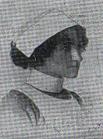 Cyril Walker's sister Dora
Cyril Walker's sister Dora
Cyril and Dorothea’s son John served with distinction in the RAF in the second world war and was awarded the Distinguished Flying Cross. He worked tirelessly for many years as President of the Spenborough Branch of the Royal British Legion. He died in 2009 and was the source of some of the above information.
****
CAPTAIN HERBERT WHARTON
2nd/4th West Riding Regiment
Died of illness 5 July 1917
Age 21
Buried at St Sever Cemetery, Rouen
Lived Eldon House, Cleckheaton

Herbert Wharton was a student at Bradford Technical College on the outbreak of war and he immediately joined the Leeds University Officer Training Corps. By October 1914 he had obtained a commission in the West Riding Regiment as a Second Lieutenant. He then spent over two years in England in various training centres, eventually going to France in 1917 as a full Lieutenant. Remarkably, he was promoted to Captain in June 1917, a very high rank for one so young and inexperienced. His battalion was very heavily involved in the Battle of Arras, particularly in the southern part of the battlefield. Apparently he had been unwell for some time with what was originally thought to be some kind of fever. A week before his death he was admitted to hospital suffering from acute anaemia. The family received a letter from Matron Roscoe of the 8th General Hospital, Rouen, advising that Herbert's condition was grave and his mother and sister departed immediately for France. They visited on the day of his death and attended his funeral in the Military Cemetery attached to the hospital.
Herbert attended Heckmondwike School and subsequently Bradford Technical College where he was studying the Chemistry of Dyeing, with a view to a career in that field.
The War Memorials in St John's Church and Heckmondwike School also bear his name.
THE WELCOME HOME PROGRAMME FOR THE RETURNING FORCES IN 1919.
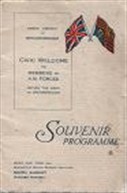
APPENDIX
Neither the Minutes of the Spenborough Council, nor the War Memorial Sub-Committee, state an exact criterion for inclusion on the monument. I have seen two possible requirements detailed in other areas, those being (1) a Spenborough resident at the outbreak of war and / or (2) a Spenborough resident at the time of death.
Clearly some of the officers detailed in the book did not meet both criteria, some met neither, but for other reasons, possibly family influence, they were included.
Six other officers with Spenborough connections did not meet the exact requirements and were not included, although they appear to have as much of a claim as some who were. They are:
****
2nd LIEUTENANT JACK GARSIDE
Royal Air Force
Died in a flying accident in Norfolk18 November 1918
Age 21
Buried in London Road Cemetery, Coventry, Warwickshire
He was a born and bred in Cleckheaton, but the family moved to Coventry before the war. Floral tributes bearing his name were placed on the War Memorial in 1922.
****
2nd LIEUTENANT NORMAN GEORGE ISHERWOOD
174 Tunnelling Company, Royal Engineers
Killed in action 8 October 1915
Age 22
Buried Point 110 Old Military Cemetery, Fricourt, France
He was born and bred in Cleckheaton, but his parents moved to Birmingham before the war.
His grandfather was the proprietor of the Hope Joinery Works, Cleckheaton. Norman is listed on the St John's Church Memorial.
****
LIEUTENANT SAMUEL GUY ISHERWOOD
7thWest Yorkshire Regiment
Died of wounds 20 September 1918
Age 20
Buried Thilloy Road Cemetery, Boulencourt, France
His parents lived in Bolton, but when Samuel was orphaned in 1907, he came to live with his uncle and aunt, Mr and Mrs J Hargreaves Oddy in Liversedge. They also had a London address. He is listed on the Liversedge Church War Memorial.
****
LIEUTENANT GERALD LEATHER
Royal Navy - HMS Pathfinder
Drowned 5 September 1914 when his ship hit a mine
in the Firth of Forth
Age 26
Commemorated on the Chatham Naval Memorial to the Missing
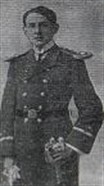
He was born and spent his early years in Cleckheaton, but moved to Devon. He was part of a large family, some of whom remained in Cleckheaton. He is commemorated on the St Luke's Church and St John's Church War Memorials.
****
2ND LIEUTENANT NORMAN PEARCE
Lancaster Regiment
Killed in action 12 October 1917
Age 18
Listed on the TyneCot Memorial to the Missing, Passchendaele

His grandfather was Enos Smith, the owner of Pyenot Wireworks, Cleckheaton, and his parents lived at Pyenot Hall, and also had a home in London. Listed on St John's Church War Memorial. From being aged fifteen to seventeen (when he enlisted) he worked at Smith's Doncaster Branch.
****
CAPTAIN ALEXANDER A SEATON
1st Cambridgeshire Regiment
Killed in action 4 September 1915
Age 30
Buried Cité Bonjean Military Cemetery, Armentières

His late father had been the vicar of St John's Church, Cleckheaton, for many years and his mother later moved to Halifax. Alexander had been away from the area for many years pursuing an academic career, after obtaining degrees at Cambridge University. He is listed on the St John's Church War Memorial.
****
Speculation
Sydney Newlands and the Hyde Brothers
After recently rescuing several War Memorials from a defunct chapel in Gomersal my interest was again sparked in the above men.
Sydney Baron Newlands was the son of the Rev Robert Newlands.
Charles Stuart and Eustace Emile Hyde were the sons of the Rev Tom Dodsworth Hyde.
Rev Newlands was the Minister at Providence Place Chapel, Cleckheaton whilst Rev Hyde was the Vicar at Whitechapel Church in Cleckheaton.
It is reasonable to suppose the sons were known to each other.
On the outbreak of war Eustace enlisted in the Bradford Pals on 11 September 1914 he was subsequently commissioned into the Royal Irish Fusiliers and was killed in action on 12 October 1916 age 23.
Sydney Newland and Charles Hyde both enlisted in the Leeds Pals in September 1914, probably together. Both followed a similar path and Charles was commissioned into the Bradford Pals in April 1915 and Sydney followed him the month after, both as Second Lieutenants. They died together facing the village of Serre on the Somme on 1 July 1916.
Two Second Lieutenants bodies LYING TOGETHER, along with many other Pals, were found when the Germans retreated from Serre in 1917 and were buried together that year in the Serre Road Cemetery No2.
Looking at the original Commonwealth War Graves Burial records for Serre No 2 it can be seen that two unknown 2nd Lts of the West Yorks Regt were originally buried in plot 7 Row C in adjoining graves, numbered 6 and 7.
In 1927 many bodies were exhumed for subsequent reburial and the erection of headstones. The CWGC Registration Officer reported on 26 February 1927 :-
In grave 6 - found the body of an unidentified 2nd Lt along with a pair of size 8 leather boots, WYorks badges and buttons, Webley revolver, passbook, photo and a cigarette holder. For some reason they decided this grave belonged to Newlands.
In grave 7 they found the body of an unidentified 2ndLt along with a pair of size 7 Norwegian style leather boots, WYorks badges and buttons, epaulettes AND A PACKETT OF LETTERS WRAPPED IN OILSKIN ADDRESSED TO 2nd Lt SYDNEY NEWLANDS 16 WEST YORKSHIRE REGIMENT.ie Bradford Pals.
For some reason they decided this grave belonged to an unidentified 2ndLt of the West Yorks Regt – known unto God
It seems to me that a mistake was made when marking these two graves which is easily understandable as they were dealing with over 7,000 graves in this cemetery. To this day grave 6 is named to Newlands and grave 7 is marked “an unknown 2nd Lieutenant of the West Yorkshire Regiment – Known Unto God”.
In view of the above details I would like to think that the unknown 2nd Lt is Charles Hyde but this is questionable. Sixteen 2nd Lts of the Leeds and Bradford Pals (West Yorks Regt) died in front of Serre that morning. Six of them are buried in known graves but the other ten have no known grave and are commemorated on the Thiepval Memorial to the Missing. Thus there is a 1 in 10 chance that my unknown soldier is Charles Hyde. Not enough to ask the CWGC to re-examine the two graves I’m afraid.
****
Cleckheaton's Finest
Officers who fell in the
Great War
by
Charlie Turpin
(Update July 2023)